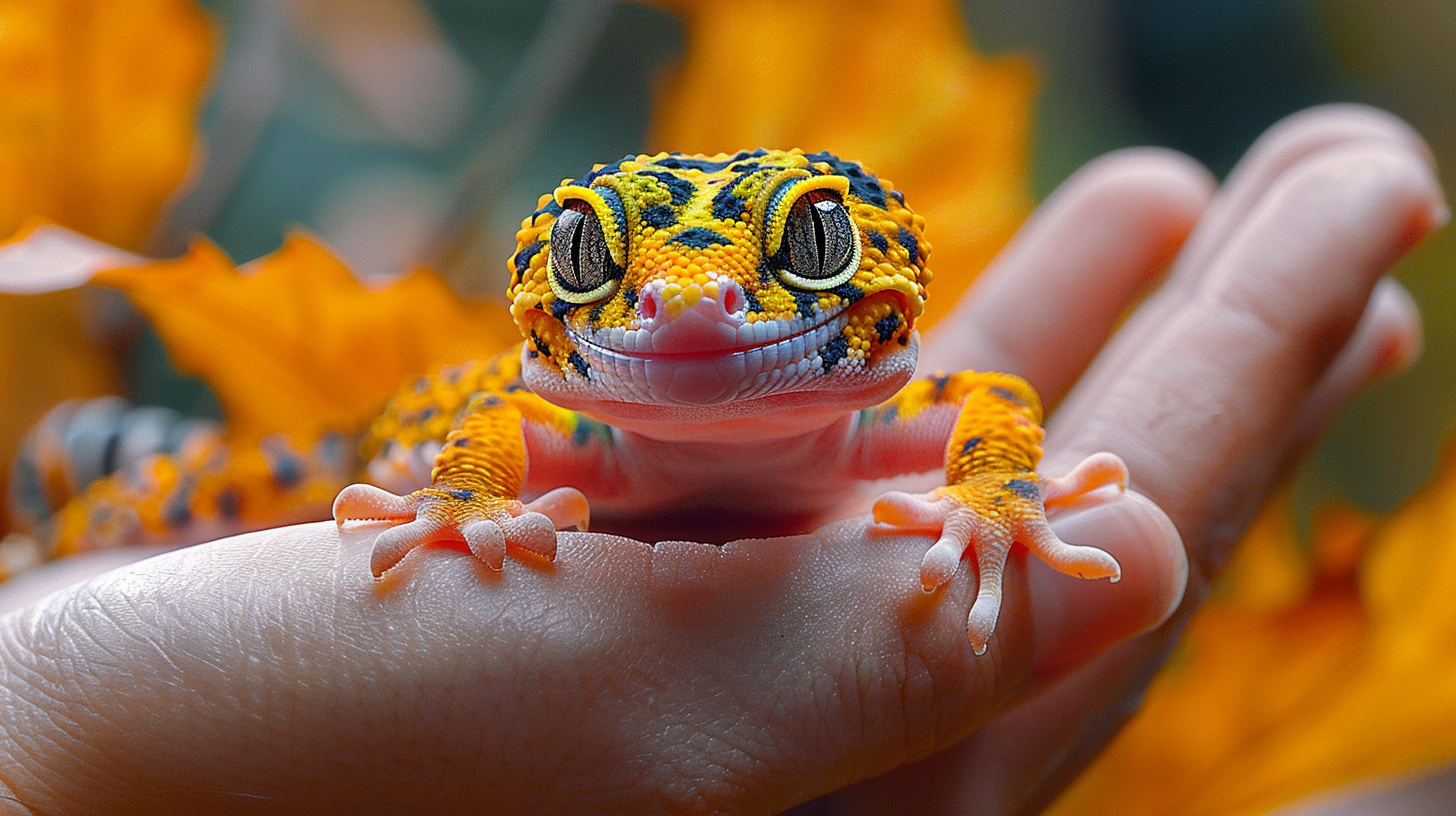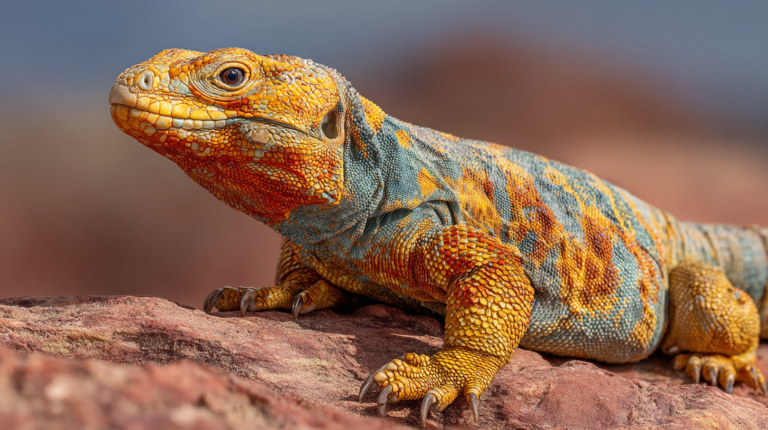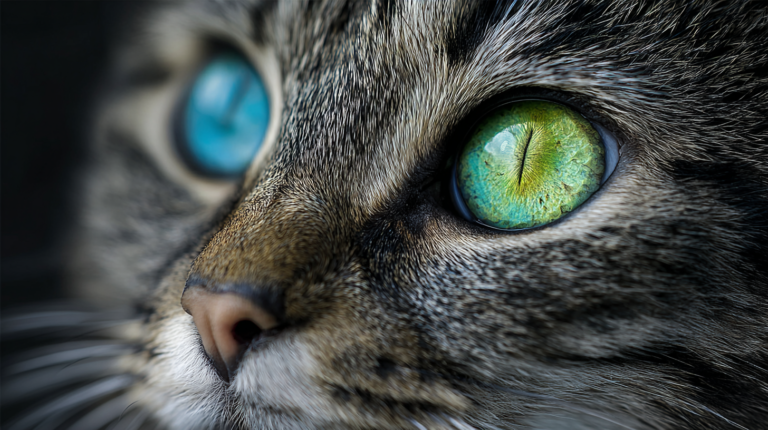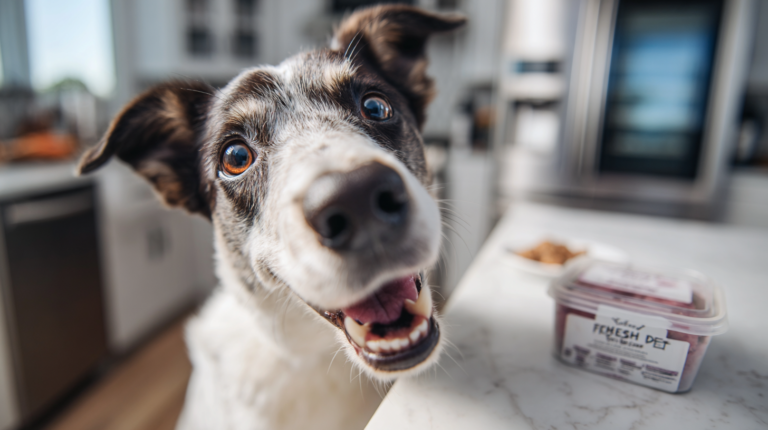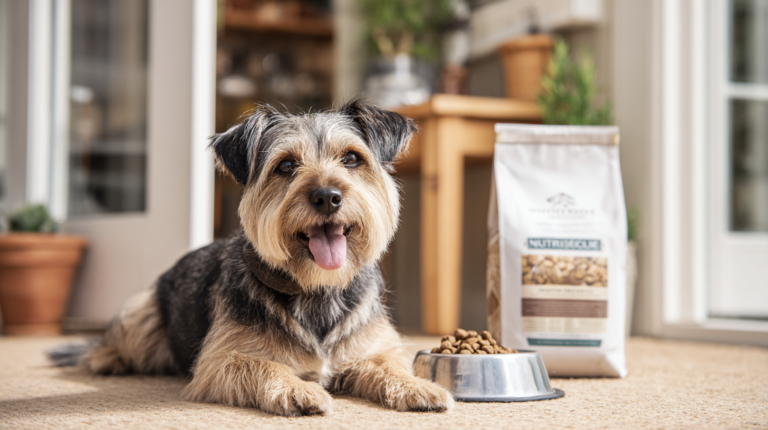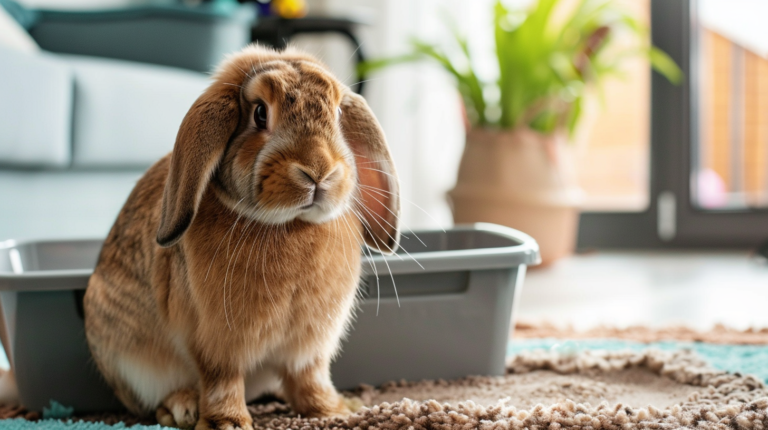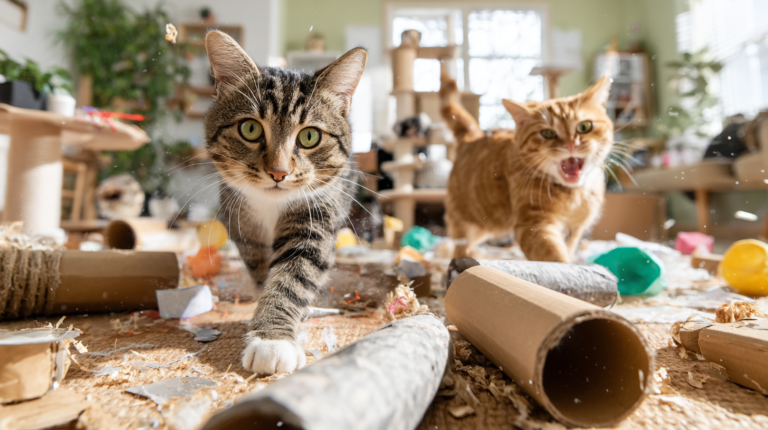Discover How Big Can a Leopard Gecko Get with our comprehensive 2025 size guide. Learn about growth stages, factors affecting size, and expert care tips for healthy development.
Table of Contents
Leopard geckos have captured the hearts of reptile enthusiasts worldwide with their docile nature, stunning patterns, and manageable size. If you’re considering adding one of these fascinating creatures to your family or already have one, you’re probably wondering: how big can a leopard gecko get? Understanding your gecko’s potential size is crucial for providing proper housing, nutrition, and care throughout their lifetime.
These remarkable reptiles, scientifically known as Eublepharis macularius, are native to the arid regions of Afghanistan, Pakistan, northwest India, and Iran. While they’re considered one of the smaller gecko species, their size can vary significantly based on several factors including genetics, diet, housing conditions, and overall health management.
In this comprehensive guide, we’ll explore everything you need to know about leopard gecko size, from hatchling measurements to full adult dimensions. Whether you’re a first-time gecko owner or an experienced reptile keeper, this information will help you provide the best possible care for your scaly companion.
Understanding Leopard Gecko Size Basics
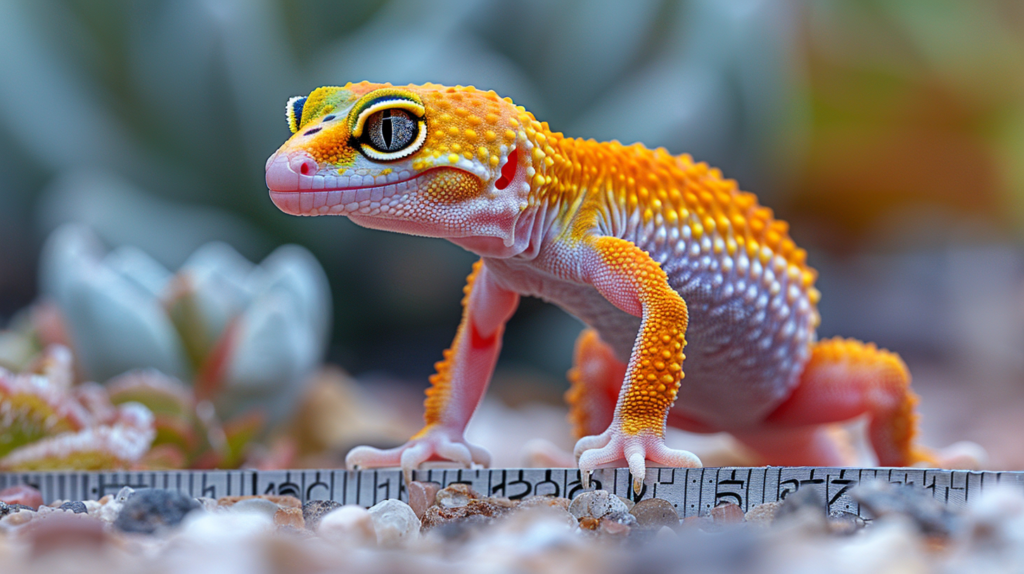
Leopard geckos are classified as medium-sized lizards in the gecko family. Adult leopard geckos typically measure between 7 to 10 inches in total length, with some exceptional individuals reaching up to 12 inches. However, size isn’t just about length – weight, body condition, and overall proportions all play important roles in determining whether your gecko is developing properly.
The average adult leopard gecko weighs between 45 to 80 grams, with males generally being larger and heavier than females. This size difference becomes more pronounced as the geckos reach sexual maturity, usually around 12 to 18 months of age.
Key Size Measurements:
- Total Length: 7-10 inches (18-25 cm) for most adults
- Weight Range: 45-80 grams for healthy adults
- Tail Length: Approximately 30-40% of total body length
- Head-to-Vent Length: 4-6 inches (10-15 cm)
Understanding these baseline measurements helps you track your gecko’s growth and identify any potential health concerns early. Regular monitoring of size and weight is particularly important during the first year of life when growth is most rapid.
Growth Stages and Development Timeline
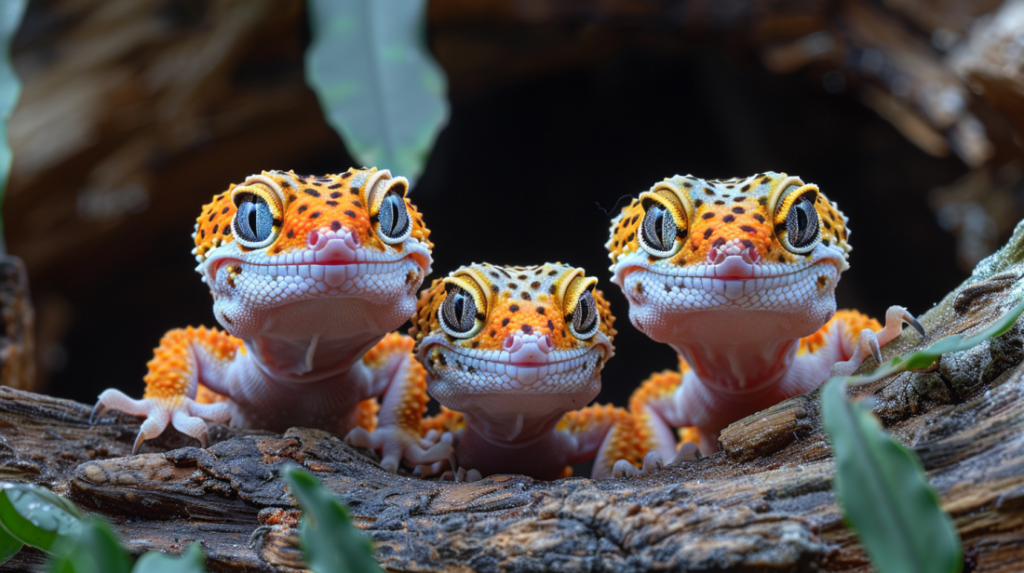
Hatchling Stage (0-2 Months)
Newly hatched leopard geckos are remarkably small, typically measuring just 3 to 4 inches in total length and weighing between 2 to 5 grams. At this stage, they’re incredibly fragile and require specialized care to ensure proper development.
During the hatchling phase, growth is rapid and dramatic. A healthy hatchling should gain approximately 1-2 grams per week and grow about 0.5 inches per month. Their tails are disproportionately thin compared to adult geckos, and their coloration is often more vibrant and contrasted than it will be in adulthood.
Hatchling Characteristics:
- Length: 3-4 inches (7.5-10 cm)
- Weight: 2-5 grams
- Distinctive banding patterns
- Large head relative to body size
- Thin, fragile tail
Juvenile Stage (2-6 Months)
The juvenile stage represents a period of steady, consistent growth. During this phase, leopard geckos typically measure 4 to 6 inches in length and weigh between 10 to 25 grams. Their appetite increases significantly, and they begin to develop the robust tail that serves as fat storage for adult geckos.
Juveniles start to show more individual variation in size, with some growing faster than others based on genetics and care quality. This is when proper nutrition becomes absolutely critical for achieving optimal adult size.
Juvenile Milestones:
- Length: 4-6 inches (10-15 cm)
- Weight: 10-25 grams
- Increased appetite and feeding frequency
- Beginning of tail thickening
- Color pattern stabilization
Sub-Adult Stage (6-12 Months)
Sub-adults experience continued growth but at a slower pace than juveniles. They typically measure 6 to 8 inches in length and weigh 25 to 50 grams. During this stage, sexual characteristics begin to develop, and size differences between males and females become more apparent.
The tail continues to thicken and store fat reserves, which is essential for breeding females and overall health maintenance. Sub-adults also begin to show their final adult coloration and pattern intensity.
Adult Stage (12+ Months)
Most leopard geckos reach their full adult size between 12 to 18 months of age, though some may continue growing slowly until they’re 2 years old. Adult females typically measure 7 to 8 inches and weigh 45 to 65 grams, while males are generally larger at 8 to 10 inches and 55 to 80 grams.
Factors Affecting Leopard Gecko Size
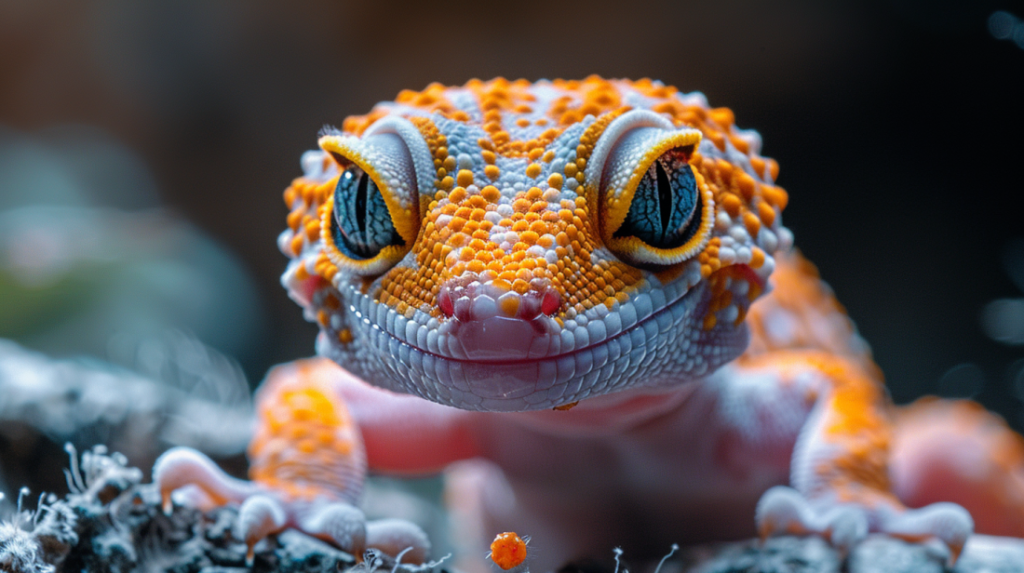
Genetic Factors
Genetics play the most significant role in determining how big a leopard gecko can get. Just like with any animal, some geckos are genetically predisposed to be larger or smaller than the average. This is particularly evident in different morphs and lineages.
Morph-Related Size Variations:
- Giant morphs: Can reach 10-12 inches and weigh up to 100+ grams
- Super Giant morphs: The largest variety, potentially exceeding 12 inches
- Normal morphs: Standard size range of 7-10 inches
- Dwarf lines: Smaller genetic lines that typically max out at 6-7 inches
Breeding history also influences size potential. Geckos from well-established breeding lines with documented size records are more likely to reach their genetic potential compared to those from unknown or poorly documented lineages.
Nutritional Factors
Proper nutrition during the growth phase is absolutely crucial for leopard geckos to reach their full size potential. Inadequate nutrition can result in stunted growth, while overfeeding can lead to obesity and health problems.
Essential Nutritional Requirements:
- Protein: 85-90% of diet should consist of appropriate insects
- Calcium: Critical for bone development and overall growth
- Vitamins: Particularly vitamin D3 and vitamin A
- Hydration: Proper water availability and humidity levels
The quality and variety of feeder insects significantly impact growth rates. Gut-loaded crickets, mealworms, dubia roaches, and other appropriate insects provide the protein and nutrients necessary for optimal development.
Environmental Conditions
The environment in which a leopard gecko lives directly affects its ability to grow and thrive. Temperature, humidity, lighting, and enclosure size all play important roles in healthy development.
Critical Environmental Factors:
Temperature Requirements:
- Warm side: 88-92°F (31-33°C)
- Cool side: 78-80°F (26-27°C)
- Nighttime: 70-75°F (21-24°C)
- Proper temperature gradients are essential for digestion and metabolism
Humidity and Lighting:
- Humidity: 30-40% with humid hide available
- UVB lighting: While not mandatory, it can improve calcium absorption
- Photoperiod: 12-14 hours of light during active season
Enclosure Size:
- Minimum 20-gallon long tank for adults
- Larger enclosures allow for more natural behaviors
- Adequate hiding spots and climbing opportunities
Health and Veterinary Care
Regular health monitoring and veterinary care ensure that leopard geckos can reach their full size potential. Parasites, metabolic bone disease, and other health issues can significantly impact growth and development.
Common Health Issues Affecting Size:
- Metabolic Bone Disease (MBD): Caused by calcium deficiency
- Parasites: Internal parasites can prevent nutrient absorption
- Impaction: Digestive blockages affect appetite and growth
- Respiratory infections: Can reduce appetite and activity levels
Regular fecal exams, weight monitoring, and veterinary check-ups help identify and address health issues before they impact growth.
Male vs. Female Size Differences
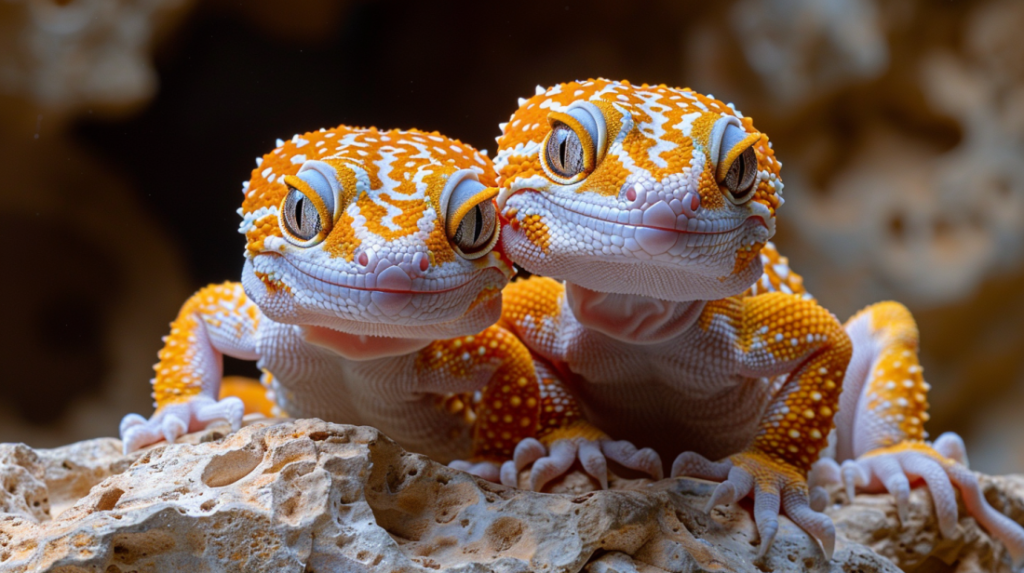
Sexual dimorphism in leopard geckos becomes apparent as they reach maturity. Understanding these differences helps set appropriate expectations for your gecko’s adult size.
Male Characteristics and Size
Male leopard geckos are typically larger and more robust than females. They develop distinctive features that become more pronounced with age:
Physical Characteristics:
- Size: 8-10 inches (20-25 cm) in length
- Weight: 55-80 grams average, up to 100+ grams in giant morphs
- Head: Broader, more triangular head shape
- Neck: Thicker, more muscular neck
- Pre-anal pores: Visible V-shaped row of pores above the vent
- Hemipenal bulges: Visible bulges at the base of the tail
Male geckos often have more vibrant coloration and bolder patterns, though this varies significantly between individual animals and morphs.
Female Characteristics and Size
Female leopard geckos are generally smaller and more streamlined than males:
Physical Characteristics:
- Size: 7-8 inches (18-20 cm) in length
- Weight: 45-65 grams average
- Head: Narrower, more pointed head shape
- Body: More compact, less robust build
- Pre-anal pores: Absent or very faint
- Tail: Typically thinner at the base
Breeding females may temporarily appear larger due to developing eggs, but their baseline size remains smaller than males.
Size Comparison Chart
| Life Stage | Age | Length (inches) | Weight (grams) | Key Characteristics |
| Hatchling | 0-2 months | 3-4 | 2-5 | Vibrant patterns, thin tail |
| Juvenile | 2-6 months | 4-6 | 10-25 | Rapid growth, increased appetite |
| Sub-adult | 6-12 months | 6-8 | 25-50 | Sexual characteristics developing |
| Adult Female | 12+ months | 7-8 | 45-65 | Mature size, breeding capable |
| Adult Male | 12+ months | 8-10 | 55-80 | Larger build, prominent features |
| Giant Morph | 18+ months | 10-12 | 80-100+ | Exceptional size, rare genetics |
Record-Breaking Sizes and Giant Morphs
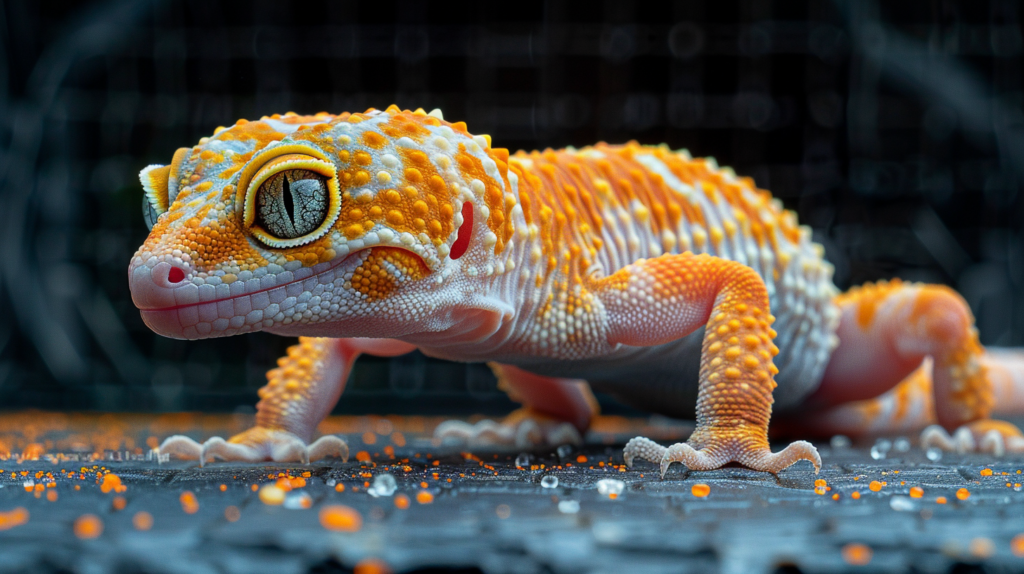
While most leopard geckos fall within the standard size ranges, some exceptional individuals and specific morphs can achieve truly impressive dimensions.
Giant and Super Giant Morphs
Giant morphs were first developed by Ron Tremper and represent some of the largest leopard geckos in captivity. These geckos are selectively bred for size and can significantly exceed normal size expectations.
Giant Morph Characteristics:
- Length: Often 10-11 inches, some reaching 12 inches
- Weight: 80-120 grams, with some exceptional individuals exceeding 140 grams
- Development: Slower growth rate but longer growth period
- Genetics: Polygenic trait requiring careful breeding selection
Super Giant Morphs:
- Length: 11-12+ inches possible
- Weight: 100-150+ grams in exceptional cases
- Rarity: Extremely rare and expensive
- Care: Require larger enclosures and increased food quantities
Record Holders
The largest confirmed leopard gecko on record measured approximately 12.2 inches in total length and weighed 165 grams. This exceptional individual was a super giant morph from a specialized breeding program focused on size development.
It’s important to note that extreme size doesn’t always correlate with health or longevity. Some of the largest geckos may have shorter lifespans or increased health risks compared to their average-sized counterparts.
Measuring Your Leopard Gecko
Accurate measurement is essential for tracking growth and ensuring your gecko is developing properly. Here’s how to safely and accurately measure your leopard gecko:
Length Measurement
Equipment Needed:
- Flexible measuring tape or ruler
- Clear plastic container (optional)
- Assistant (helpful for active geckos)
Step-by-Step Process:
- Preparation: Ensure your gecko is calm and has been handled recently
- Positioning: Place the gecko on a flat surface or in a clear container
- Measurement: Measure from the tip of the nose to the tip of the tail
- Recording: Note the measurement and date for growth tracking
Tips for Accurate Measurement:
- Measure when the gecko is relaxed and extended
- Take multiple measurements and average them
- Be gentle to avoid stress or injury
- Consider measuring during regular handling sessions
Weight Measurement
Regular weight monitoring is even more important than length measurement for assessing health and growth.
Equipment:
- Digital scale accurate to 0.1 grams
- Small container for weighing
- Record-keeping system
Weighing Process:
- Tare the scale: Zero out the weight of the container
- Place gecko: Gently place the gecko in the container
- Wait for stability: Allow the reading to stabilize
- Record: Note weight, date, and any observations
Optimal Weighing Schedule:
- Hatchlings: Weekly
- Juveniles: Bi-weekly
- Adults: Monthly
- Breeding females: Weekly during breeding season
Housing Requirements Based on Size
Proper housing is crucial for allowing leopard geckos to reach their full size potential and maintain good health throughout their lives.
Minimum Enclosure Sizes
Size-Based Housing Guidelines:
- Hatchlings (0-6 months): 10-gallon tank minimum
- Juveniles (6-12 months): 20-gallon long tank minimum
- Adult females: 20-gallon long tank minimum
- Adult males: 30-40 gallon tank recommended
- Giant morphs: 40+ gallon tank strongly recommended
Enclosure Dimensions:
- 20-gallon long: 30″ x 12″ x 12″ floor space
- 40-gallon breeder: 36″ x 18″ x 16″ floor space
- Custom enclosures: 48″ x 24″ x 18″ for giant morphs
Environmental Setup
Regardless of size, all leopard geckos need specific environmental features:
Essential Elements:
- Warm hide: Located on the warm side of the enclosure
- Cool hide: Located on the cool side
- Humid hide: Filled with moist substrate for shedding
- Water dish: Shallow dish with fresh water
- Substrate: Safe, non-impaction causing material
- Climbing opportunities: Branches, rocks, or artificial decorations
Temperature and Lighting:
- Under-tank heater: Covering 1/3 of the enclosure floor
- Thermostat: Essential for temperature regulation
- Temperature gradient: 88-92°F warm side, 78-80°F cool side
- UVB lighting: Optional but beneficial for calcium metabolism
Nutrition for Optimal Growth
Proper nutrition is fundamental to helping leopard geckos reach their genetic size potential. Understanding feeding requirements at different life stages ensures healthy development.
Feeding Guidelines by Life Stage
Hatchling Feeding (0-2 months):
- Frequency: Daily feeding
- Quantity: 2-3 appropriately sized insects
- Insect size: No larger than the space between the gecko’s eyes
- Gut loading: 24-48 hours before feeding
- Supplements: Calcium with D3 every other feeding
Juvenile Feeding (2-6 months):
- Frequency: Daily feeding
- Quantity: 4-6 insects per feeding
- Variety: Introduce different feeder insects
- Supplements: Calcium every feeding, multivitamin weekly
Sub-adult Feeding (6-12 months):
- Frequency: Every other day
- Quantity: 6-8 insects per feeding
- Size progression: Gradually increase insect sizes
- Supplements: Maintain calcium and vitamin schedule
Adult Feeding (12+ months):
- Frequency: Every 2-3 days
- Quantity: 6-10 insects per feeding
- Maintenance: Focus on maintaining weight rather than growth
- Supplements: Calcium every feeding, multivitamin bi-weekly
Best Feeder Insects for Growth
Primary Feeders:
- Crickets: Excellent protein source, widely available
- Dubia roaches: High protein, low fat, good calcium ratio
- Mealworms: Convenient, but higher fat content
- Black soldier fly larvae: Excellent calcium content
Occasional Treats:
- Superworms: For larger geckos, higher fat content
- Waxworms: High fat, use sparingly as treats
- Silkworms: Excellent nutrition when available
Supplementation Protocol
Calcium Requirements:
- Growing geckos: Dust insects with calcium + D3 every feeding
- Adults: Calcium + D3 every other feeding
- Breeding females: Increase calcium supplementation
Vitamin Requirements:
- Multivitamin: Once weekly for all age groups
- Vitamin A: Particularly important for immune function
- Vitamin D3: Essential for calcium absorption
Health Monitoring and Size-Related Issues
Regular health monitoring ensures that size-related issues are identified and addressed promptly.
Signs of Healthy Growth
Physical Indicators:
- Steady weight gain: Consistent with age and size expectations
- Proportionate development: Head, body, and tail developing evenly
- Good body condition: Not overweight or underweight
- Active behavior: Normal feeding and activity levels
- Proper shedding: Complete, regular shed cycles
Behavioral Signs:
- Normal appetite: Consistent feeding response
- Alert demeanor: Active and responsive to environment
- Proper elimination: Regular, well-formed waste
- Thermoregulation: Using temperature gradient appropriately
Common Size-Related Health Issues
Stunted Growth:
- Causes: Poor nutrition, inadequate temperatures, parasites, genetics
- Signs: Smaller than expected for age, slow weight gain
- Treatment: Veterinary evaluation, husbandry review, potential diet changes
Obesity:
- Causes: Overfeeding, lack of exercise, genetic predisposition
- Signs: Excessive weight, fat deposits, lethargy
- Treatment: Reduced feeding frequency, increased activity, veterinary consultation
Metabolic Bone Disease (MBD):
- Causes: Calcium deficiency, improper UVB, poor diet
- Signs: Soft bones, deformities, weakness, tremors
- Treatment: Immediate veterinary care, husbandry corrections
When to Consult a Veterinarian
Red Flags:
- Sudden weight loss or gain
- Failure to grow for extended periods
- Visible deformities or abnormalities
- Changes in appetite or behavior
- Difficulty shedding or retained shed
- Signs of metabolic bone disease
Preventive Care:
- Annual veterinary examinations
- Fecal parasite testing
- Weight and size monitoring
- Husbandry consultations
Breeding Considerations and Size
Size plays a crucial role in breeding decisions and success rates for leopard geckos.
Breeding Size Requirements
Female Breeding Readiness:
- Minimum weight: 45-50 grams
- Age: At least 12 months, preferably 18+ months
- Body condition: Healthy, well-developed
- Breeding season: Typically spring through early fall
Male Breeding Readiness:
- Minimum weight: 55-60 grams
- Age: 12-18 months
- Sexual maturity: Visible hemipenal bulges and pre-anal pores
- Breeding behavior: Territorial and courtship behaviors
Size Impact on Breeding Success
Larger Females:
- Egg production: Typically produce larger, healthier eggs
- Clutch size: May lay slightly larger clutches
- Breeding longevity: Often have longer breeding careers
- Recovery time: Better able to recover between breeding cycles
Size Matching:
- Avoid extreme size differences: Very large males with small females can cause injury
- Genetic considerations: Breeding giant morphs requires careful selection
- Health priorities: Always prioritize health over size in breeding decisions
Common Myths About Leopard Gecko Size
Myth 1: Tank Size Doesn’t Affect Growth
Reality: While genetics primarily determine maximum size, inadequate housing can prevent geckos from reaching their full potential. Stress from cramped conditions can impact appetite and growth rates.
Myth 2: All Leopard Geckos Are the Same Size
Reality: There’s significant variation in adult size, from dwarf lines around 6 inches to giant morphs exceeding 12 inches. Genetics, sex, and care quality all influence final size.
Myth 3: Bigger Is Always Better
Reality: Extremely large geckos may have shorter lifespans or increased health risks. The goal should be optimal size for the individual gecko’s genetics and health.
Myth 4: You Can Stunt Growth by Feeding Less
Reality: Deliberately restricting food to limit growth is harmful and can cause serious health problems. Proper nutrition is essential regardless of desired size.
Myth 5: Size Determines Lifespan
Reality: While severely stunted geckos may have health issues, there’s no direct correlation between size and lifespan in healthy geckos. Proper care is more important than size.
Advanced Size Considerations
Morph-Specific Size Expectations
Different morphs can have varying size potentials:
Size-Enhanced Morphs:
- Giant: 10-11 inches, 80-120 grams
- Super Giant: 11-12+ inches, 100-150+ grams
- Jungle Giants: Large size with pattern variations
Standard Morphs:
- Normal: 7-10 inches, 45-80 grams
- High Yellow: Standard size range
- Tangerine: Standard size range
- Albino strains: Generally standard size
Specialty Considerations:
- Dwarf lines: Some bloodlines consistently produce smaller geckos
- Imported genetics: Wild-caught ancestry may influence size
- Line breeding: Selective breeding can enhance or reduce size
Seasonal Size Fluctuations
Leopard geckos experience natural seasonal changes that can affect their size and weight:
Breeding Season (Spring/Summer):
- Increased appetite: Higher food intake supports reproduction
- Weight gain: Preparation for breeding activities
- Activity levels: Increased movement and territorial behavior
Cooling Period (Fall/Winter):
- Reduced appetite: Natural decrease in food intake
- Weight loss: Normal seasonal weight fluctuation
- Slower growth: Reduced growth rates in young geckos
Understanding these natural cycles helps distinguish between normal seasonal changes and health concerns.
Special Care for Large Geckos
Giant and super giant morphs require specialized care considerations:
Housing Modifications
Enclosure Requirements:
- Minimum size: 40-gallon breeder or larger
- Floor space: More important than height
- Sturdy construction: Larger geckos can be more destructive
- Reinforced decorations: Ensure climbing structures can support weight
Environmental Adjustments:
- Larger hides: Multiple spacious hiding spots
- Bigger water dishes: Accommodate larger body size
- Stronger heating: May require more powerful heating elements
- Ventilation: Adequate airflow for larger enclosures
Nutritional Needs
Feeding Adjustments:
- Larger prey: Can handle bigger insects
- Increased quantity: More food per feeding
- Varied diet: Greater variety of feeder insects
- Supplement scaling: Proportional supplement amounts
Monitoring Requirements:
- Weight tracking: More critical for large geckos
- Body condition: Regular assessment of fat reserves
- Appetite changes: Monitor for any feeding issues
- Growth plateaus: Recognize when growth is complete
FAQ Section
How big can a leopard gecko get in captivity?
Leopard geckos in captivity typically reach 7-10 inches in length and weigh 45-80 grams. Giant morphs can exceed 12 inches and weigh over 100 grams, while some dwarf lines may only reach 6-7 inches. Proper care, nutrition, and genetics all influence maximum size potential.
At what age do leopard geckos stop growing?
Most leopard geckos reach their full adult size between 12-18 months of age. However, some may continue growing slowly until they are 2 years old, particularly larger morphs like giants and super giants. Growth rate slows significantly after the first year.
Do male leopard geckos get bigger than females?
Yes, male leopard geckos are typically 10-20% larger than females. Adult males usually measure 8-10 inches and weigh 55-80 grams, while females typically measure 7-8 inches and weigh 45-65 grams. This size difference becomes apparent as they reach sexual maturity.
Can poor diet affect how big a leopard gecko gets?
Absolutely. Inadequate nutrition, particularly during the first year of life, can prevent leopard geckos from reaching their genetic size potential. Proper protein intake, calcium supplementation, and varied diet are essential for optimal growth and development.
What’s the difference between giant and super giant leopard geckos?
Giant leopard geckos typically reach 10-11 inches and weigh 80-120 grams, while super giants can exceed 12 inches and weigh 100-150+ grams. Super giants are much rarer and more expensive. Both require specialized care and larger enclosures compared to standard-sized geckos.
How often should I measure my leopard gecko’s size?
Hatchlings should be measured weekly, juveniles bi-weekly, and adults monthly. Regular size and weight monitoring helps track healthy growth and identify potential health issues early. Keep detailed records to establish growth patterns and identify any concerning changes.
For more expert pet care tips and product recommendations, visit BlithePet.com — your trusted source for pet wellness.
Conclusion
Understanding how big a leopard gecko can get is essential for providing proper care throughout their lifetime. While most leopard geckos will reach 7-10 inches in length and weigh 45-80 grams, individual variation is significant. Genetics, nutrition, environmental conditions, and healthcare all play crucial roles in determining final size.
The key to helping your leopard gecko reach its full potential lies in providing consistent, high-quality care from hatchling through adulthood. This includes proper nutrition with appropriate feeder insects and supplements, optimal housing conditions with correct temperatures and humidity, and regular health monitoring.
Remember that bigger isn’t always better – the goal should be a healthy gecko that reaches its genetic potential rather than pushing for maximum size. Whether you have a standard morph or a giant variety, focus on providing the best possible care and enjoying the unique personality that each gecko brings to your family.
Regular veterinary care, proper nutrition, and attention to environmental needs will ensure your leopard gecko lives a long, healthy life regardless of its final size. With proper care, these remarkable reptiles can be wonderful companions for 15-20 years or more.
Have a similar experience with your pet? Share it in the comments below!

